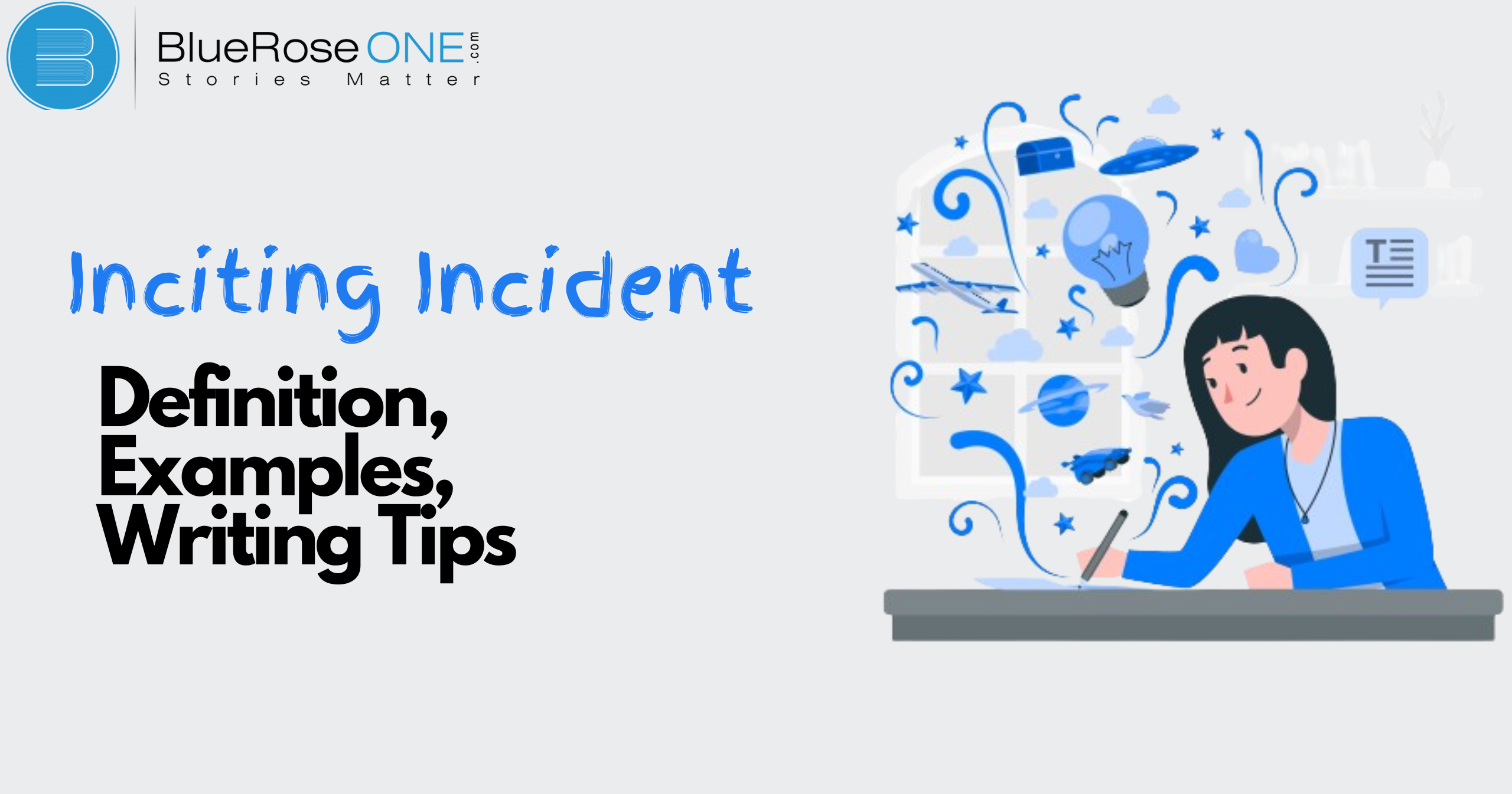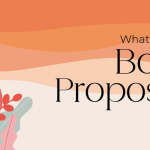There is always that one turning point in a fantastic story when everything changes. It’s the scene that draws you in and launches the story’s protagonist. The triggering incident occurs at this precise instant. However, what is an inciting incident precisely, and why is it so important in narratives?
Let’s get started by discussing its importance, giving examples, and offering advice on how to create an engaging inciting occurrence for your own stories.
You may also like: Book Illustration Styles and Techniques
What is an Inciting Incident?
An “Inciting Incident” is a pivotal event that initiates the primary plot of a story. It throws the protagonist’s routine for a loop and sets up the main conflict. This is an important occurrence because it draws the audience in and advances the story.
In “The Hunger Games,” for instance, Katniss Everdeen’s decision to enter the lethal games in lieu of her sister is the inciting occurrence. Writing a compelling inciting incident is crucial to drawing readers in and raising the stakes. To keep the audience interested, it should occur early in the story and be obvious and powerful.
Purpose of the Inciting Incident
In storytelling, the inciting incident is essential since it initiates the main plot. It’s the incident that upends the protagonist’s typical existence and puts them on a difficult new course. This scene piques the interest of the audience and draws them into the narrative.
In “Harry Potter,” for instance, Harry’s introduction to the wizarding world through his letter from Hogwarts serves as the inciting occurrence. An effective inciting incident is crucial because it draws readers in and provides the plot with a clear direction. Make sure your inciting incident in writing is interesting and directly relates to the main conflict.
Characteristics of a Good Inciting Incident
A compelling incident needs to come as a surprise. This unexpected turn of events draws in viewers and advances the plot. When an unforeseen incident upends the protagonist’s routine, it gives them a strong incentive to act.
This abrupt shift could be caused by an unexpected tragedy or an unexpected chance. The plot picks up steam and becomes more intriguing when an unexpected inciting occurrence is introduced, surprising both the characters and the readers.
In order to create a captivating and dynamic story that keeps the viewer interested in the plot as it develops, this element of surprise is essential.
Should Change the Protagonist’s Life
An excellent inciting occurrence should fundamentally alter the protagonist’s life. This is one of its most important qualities. The novel begins with this incident, which forces the main character to step outside of their comfort zone and into an unfamiliar and difficult circumstance.
There wouldn’t be a strong enough motive for the protagonist to set out on their adventure without this interruption. The audience becomes engaged in what happens next because of the inciting incident’s sense of urgency and stakes.
It acts as the impetus for the protagonist’s everyday life to change, resulting in development, conflict, and eventually the primary storyline of the tale.
Should Present a Clear Problem or Goal
An effective inciting occurrence should provide the main character a clear problem or objective. The novel begins with this incident, which upends the characters’ everyday lives and presents them either a task to do or a goal to pursue.
The inciting incident draws the reader in and starts the story by presenting a particular problem or an appealing objective. This clarity aids readers in comprehending the stakes and supporting the protagonist over the next trip.
Impact and engagement from the inciting incident depend on a well stated problem or objective.
You may also like: The Basics of the 3 Act Structure: A Beginner’s Guide
The Role of the Inciting Incident in Story Structure
Placement in the Story
An important event known as the inciting incident usually takes place early in a novel, usually in the first 10% to 15% of the plot. The major plot begins with this incident, which upends the protagonist’s routine.
It presents the main conflict and sets the character on a path of self-discovery. To draw in the audience and raise the stakes of the narrative, the inciting occurrence must be placed just right.
Writers can guarantee that readers become engrossed and invested in the unfolding drama fast by delivering the inciting act early.
How it Drives the Plot Forward
By upending the protagonist’s routine and initiating the primary events of the narrative, the inciting incident advances the storyline. At this pivotal point, the main character is forced to act and pursue their objectives when the primary conflict is introduced.
An interesting story needs an inciting occurrence because without it, there would be no direction or urgency to the tale. It grabs the audience’s attention and makes them curious about how the protagonist will handle this new problem.
The inciting occurrence drives the story ahead by acting as a clear trigger for change, guaranteeing a dynamic and engaging plot progression.
You may also like: What is a Flat Character | Examples and How to Write It
Examples of Inciting Incidents in Literature
Classic Literature
“Moby-Dick” by Herman Melville: The inciting incident occurs when Captain Ahab decides to hunt the white whale, Moby Dick, setting off a relentless and dangerous pursuit.
“Pride and Prejudice” by Jane Austen: Elizabeth Bennet’s life changes when Mr. Bingley and Mr. Darcy arrive in her neighborhood, sparking romantic and social tensions.
Modern Literature
“Harry Potter and the Philosopher’s Stone” by J.K. Rowling: Harry receives his letter from Hogwarts, revealing his true identity as a wizard and inviting him to a world of magic.
“The Hunger Games” by Suzanne Collins: Katniss Everdeen volunteers to take her sister’s place in the deadly Hunger Games, thrusting her into a fight for survival.
You may aslo like: How to Avoid Plagiarism in Assignments: 10 Easy Steps
Common Mistakes in Writing an Inciting Incident
Making it Too Subtle
Writing an inciting occurrence that is too subtle is a common mistake. Clearly, the protagonist’s everyday existence must be upended by an inciting incident in order for the story to begin. Readers may overlook its significance and not comprehend the significance of the story if it is overly subtle.
The inciting occurrence must be clear and powerful in order to provide a compelling hook and draw the reader in. This important occurrence should not be minimized; rather, it should be made to stand out and clearly change the course of the story. This clarity makes it easier for readers to understand the story’s stakes and get engrossed in it right away.
You may also like: Why the Synecdoche Poetic Device Matters in Literature
Introducing it Too Late
Writing an inciting occurrence and presenting it too late is a common mistake. Early in the narrative—usually in the first few chapters or scenes—the inciting incident should catch the reader’s interest. Readers may become disinterested if the plot seems to lag and is postponed.
A well-crafted inciting incident directs the protagonist towards the central conflict and establishes the plot’s course. It might throw off the story’s rhythm and lessen its overall impact if it is introduced too late.
Make sure the inciting occurrence happens early enough to pique readers’ interest and move the plot along in order to keep them reading.
Failing to Connect it with the Main Plot
When creating an inciting occurrence, one common mistake authors make is not tying it securely enough to the primary narrative. Similar to a significant turning point, the inciting occurrence should reveal the main conflict of the narrative. It must directly affect the protagonist and initiate their quest.
It may be difficult for readers to understand its relevance if it seems disjointed or unrelated to the primary plot. For example, the protagonist of a mystery book might be drawn into the investigation by the finding of a body, which would serve as the inciting incident.
Making sure the inciting occurrence is incorporated into the main plot effortlessly improves the narrative’s coherence and draws readers in right away.
You may also like: How to Choose the Best Narrative Writing Topics for Your Next Story
How to Write a Compelling Inciting Incident
Start with a Bang
An engaging tail engine’s ignition key is analogous to the inciting incident. It’s the turning point in the story where the protagonist’s entire world transforms.
Consider it as the spark that ignites the story’s fireworks. Start off with a bang if you want your inciting incident to really pop. This entails creating a scene or incident that draws the reader in and holds their interest right away.
The action should pick up steam after the inciting occurrence, which could be anything from a startling discovery to a sudden conflict or a pivotal choice that leaves readers wanting more.
Make it Personal for the Protagonist
Making the inciting occurrence personal for the protagonist is essential to creating a captivating story. Since this point establishes the plot, the protagonist must find great meaning in it. Consider what personally inspires and challenges them.
In “The Hunger Games,” for instance, Katniss Everdeen’s inciting occurrence forces her to volunteer in lieu of her sister once she is selected for the lethal games.
She is thrown into the center of the story’s conflict by this incredibly intimate incident. It guarantees that readers or viewers will be emotionally invested from the beginning by having the inciting incident directly touch the protagonist.
Ensure it Leads to Immediate Action
An immediate response should be given to the instigating incident, which is crucial in narrative. The story takes off at this point, pushing the characters to act quickly. In “Harry Potter and the Philosopher’s Stone,” for instance, Harry is inspired to enter the wizarding world when he receives his Hogwarts letter.
Make sure your inciting incident is attention-grabbing and lively to maximize its impact on the audience. It should advance the plot by being understandable and captivating. You may captivate readers or viewers and create a captivating journey by emphasizing the urgency and action of this occurrence.
Thus, carefully consider how to write your inciting occurrence such that it grabs readers’ attention right away and advances the plot.
Conclusion
The catalyst for storytelling, the inciting incident pushes the protagonist into action and establishes the scene for the story’s development. Writers can captivate readers, set up a clear stake, and create a memorable narrative by creating a powerful inciting incident.
















